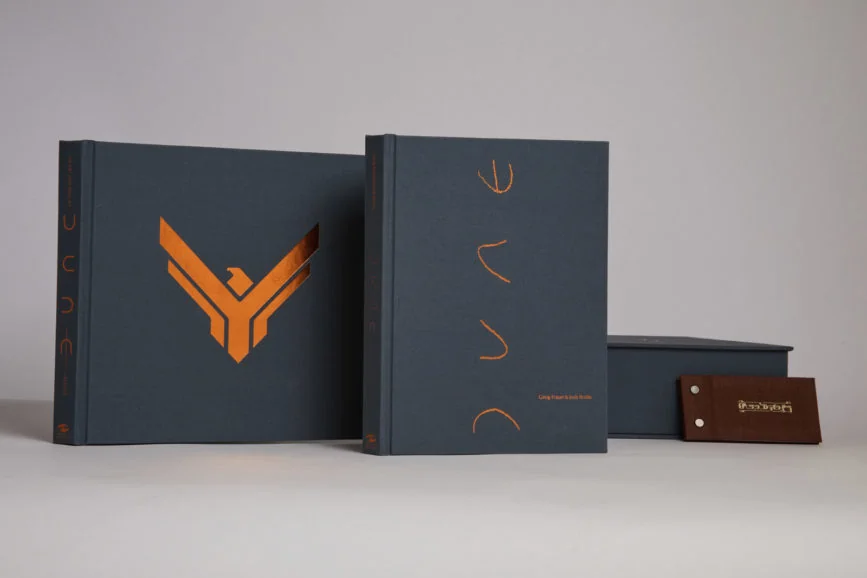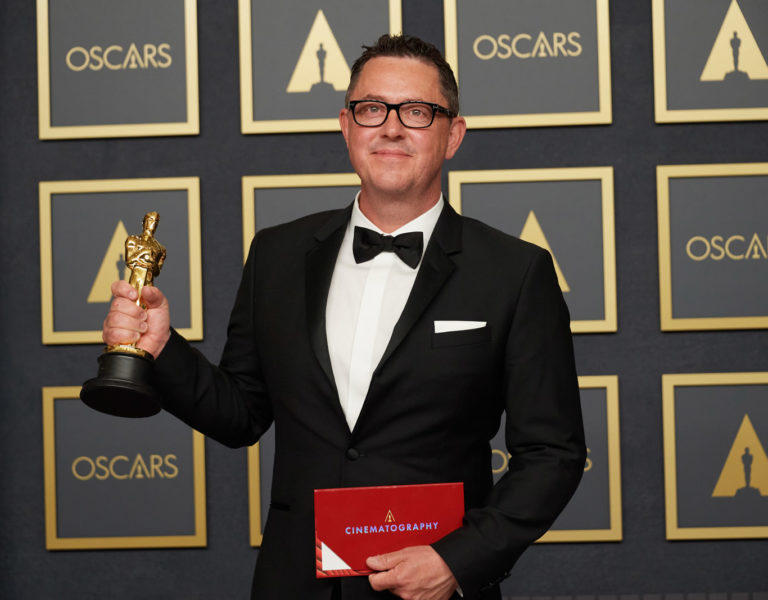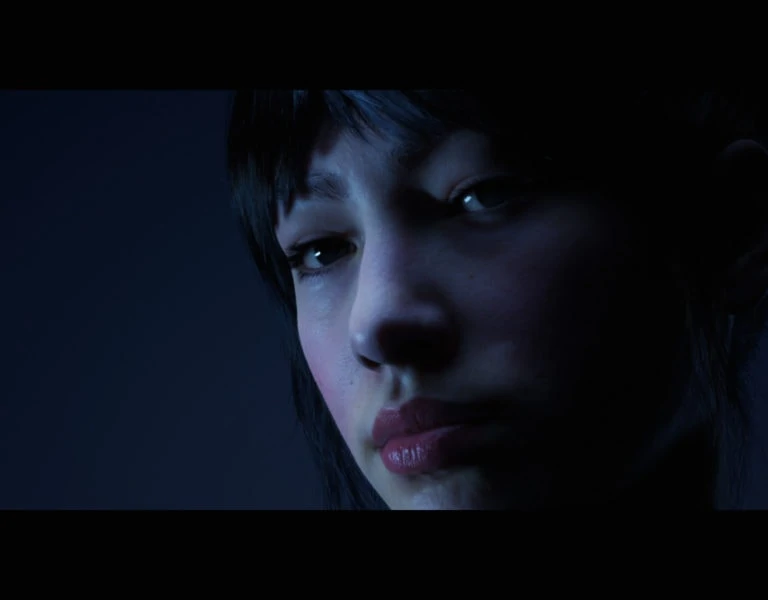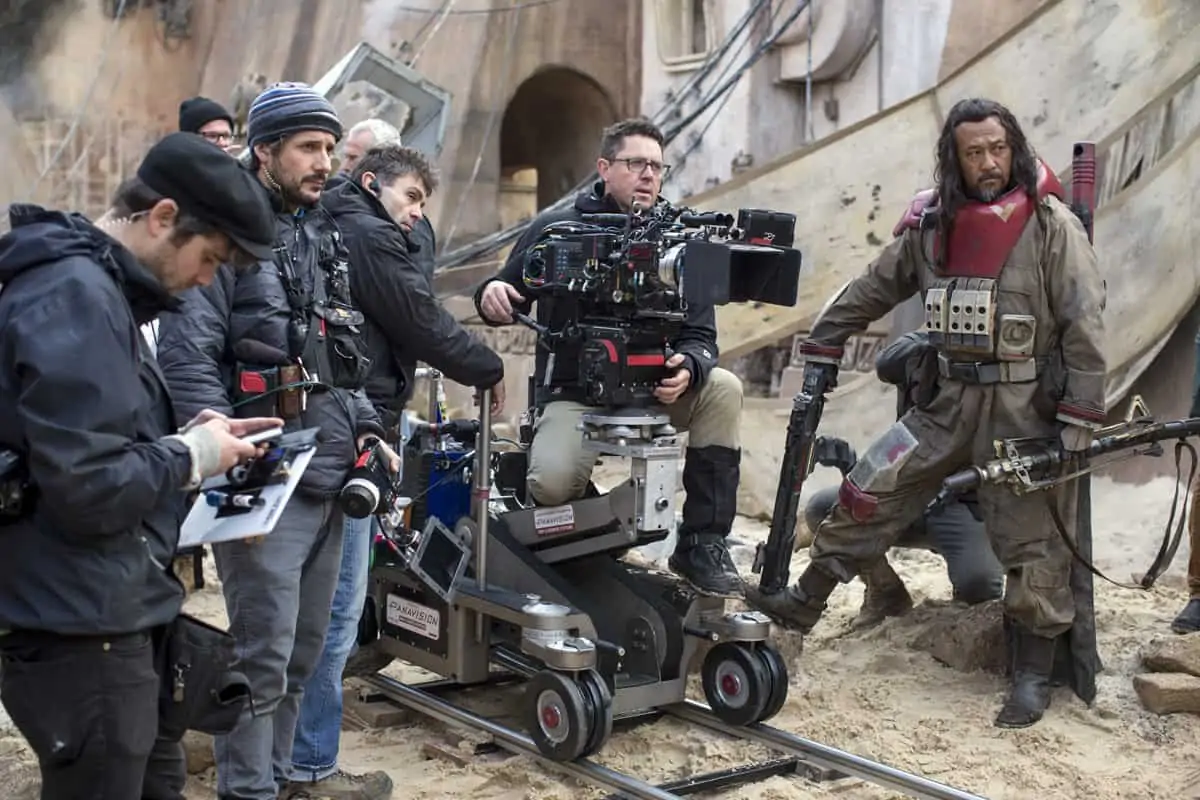Dune cinematographer Greig Fraser ASC ACS and actor Josh Brolin enjoyed a liberating creative process and visual and poetic freedom of expression whilst collaborating on a book that celebrates a shared love of film and storytelling and captures the emotion of a moment.
Photography, poetry, and design collide in a new book from Dune cinematographer Greig Fraser ASC ACS and Josh Brolin capturing the on-set experiences and the people involved in telling the epic story. An amalgamation of art, words, and emotion, the experimental creation accompanies the limited edition behind-the-scenes-book, Legendary’s The Art and Soul of Dune, written by author and Dune executive producer, Tanya Lapointe.
Dune saw Fraser return to his photographic roots and re-engage with his love for still images, as well as lensing director Denis Villeneuve’s sci-fi production. Prior to beginning prep, Villeneuve asked the cinematographer if he would document the process of making the movie, having been impressed by work from Fraser’s early career as a photographer.
“I hadn’t shot stills for years and was only just starting to get back into it, experimenting with my old Russian and Ukrainian cameras,” says Fraser. “Denis and I had agreed that these images were primarily just for us.”
Happy to experiment “so long as there was no pressure for the project to be anything specific”, Fraser began shooting, adopting a spontaneous approach to documenting the filmmaking process. “I was making the most important film I’d ever made, so I didn’t want anything to derail that. If I saw something interesting, and I had a second to reflect, then I shot it. It was very meditative because I could switch my brain in a different direction, and maybe make the film better by doing so.”
Two months into the process, Fraser assessed his images. “At first, I thought, oh my, this is garbage. But as I began editing, I realised there were some real gems in there and some personal moments had been captured, so I started sharing them on set with Josh Brolin [who plays Gurney Halleck in Dune].”
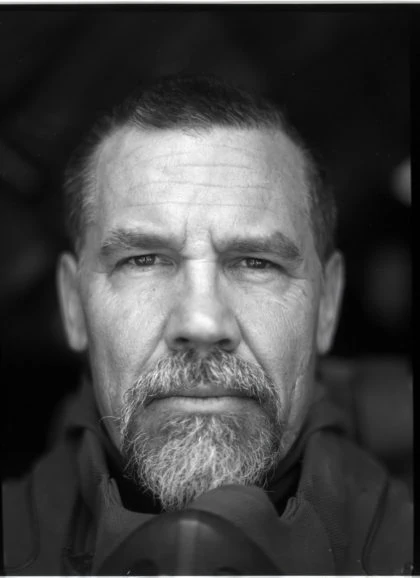
A conversation between Villeneuve, Fraser, Brolin, and Lapointe about The Art and Soul of Dune book which was already in the works then spawned the idea of an accompanying infusion of Fraser’s photography and the creative writing of Brolin.
Fraser was keen to explore the realms of prose and poetry, having developed a love and appreciation of them while shooting Jane Campion’s film about the life of poet John Keats, Bright Star. “Josh is such a prolific writer and I’d already expressed an enjoyment of his work,” says Fraser. “So, we floated the idea of making a product combining poetry and images, with no rules.”
Like Fraser, Brolin painted when he was younger and took many photographs, but writing has always resonated most with him. “It’s all about being able to marry a strong visual with an emotion,” says Brolin. “I think visuals without emotion is a mind without heart. There was something emotional about the process when Greig was taking photos on set – he never got in anybody’s face.”
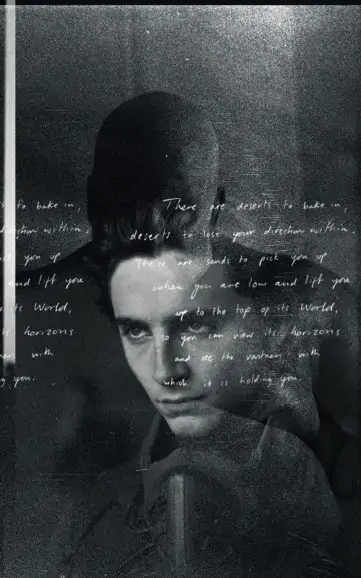
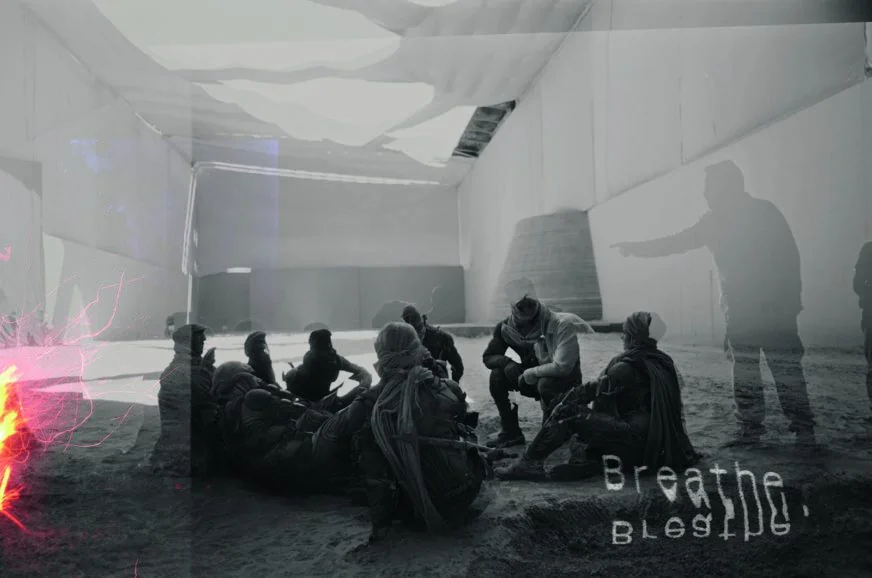
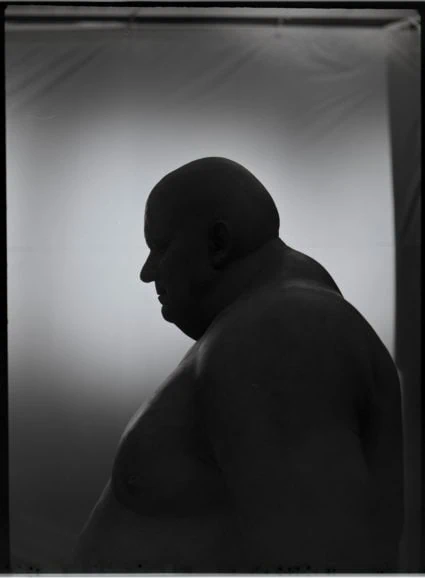
During lockdown, the pair explored the possibilities of the exciting collaborative project, inviting designers Henry Hobson and Manija Emran from Me and the Bootmaker into the fold. Fraser selected 150 of his favourite images and sent them to Brolin, Hobson, and Emran, who responded with design and words.
The images Fraser selected brought the experience flooding back into Brolin’s mind. “I love putting words to images or contrasting words with a photograph,” he says. “As Greig’s images are so powerful and it was such a human experience, it was easy to write about. To be able to dive back into that pool made the writing a lot more intimate and human.”
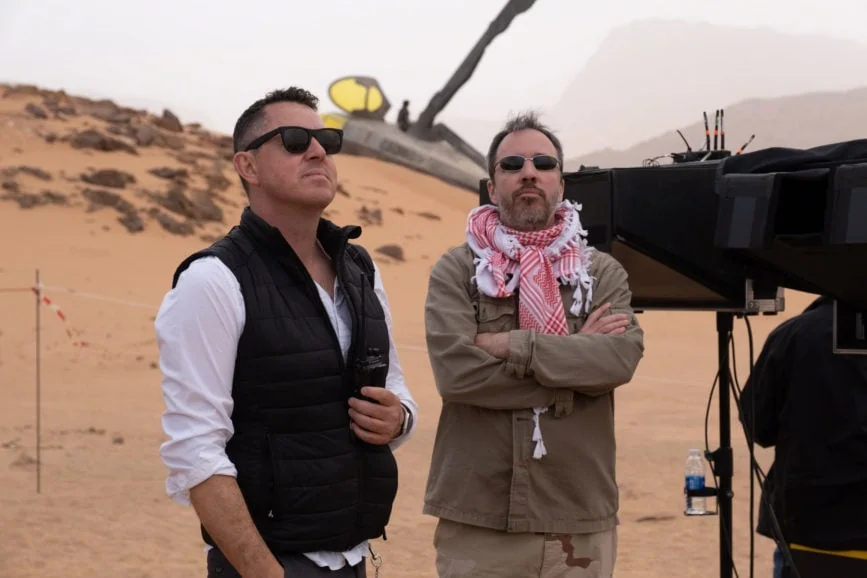
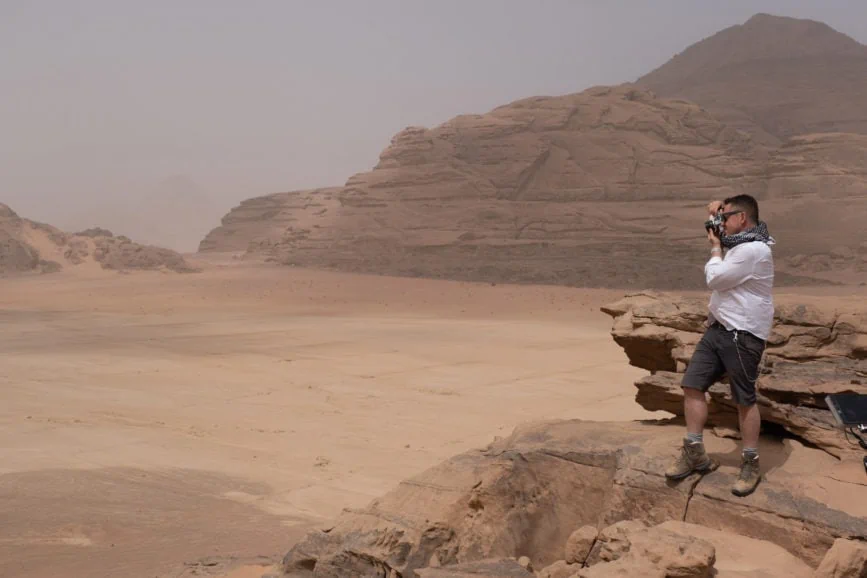
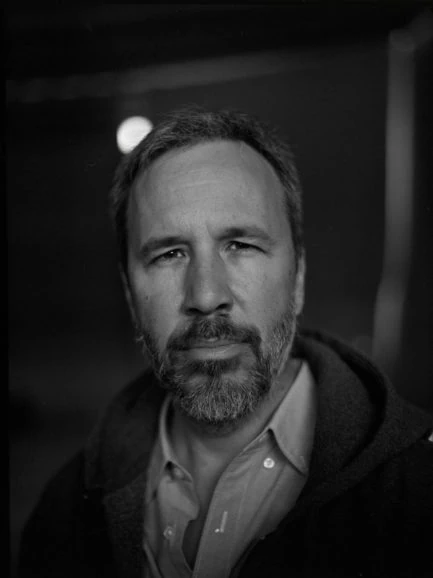
While the film is a masterpiece in itself, photographing the characters and people behind them was also a joy for Fraser. One of his favourite images captures Stellan Skarsgård sitting in a chair, swamped by prosthetics to transform him into villain Baron Harkonnen. “It’s unromantic and it’s beautiful because, to me, it sums up Stellan at that point in time. Filmmaking can be unrelentless and it’s nice to be able to convey that in an image.
“I love taking photos of people and faces, and those times when people don’t look their best. I wanted to be respectful to the actors but also strove to find images that captured them in a moment.”
At first Brolin’s writing to accompany the images was esoteric, based on the sweeping landscapes and solemnity of some of the black-and-white portraits. “But then you see a picture of Stellan just sitting there, and you wonder what he’s thinking, not only the character but the actor with all the prosthetics waiting for the next shot,” he says. “There’s plenty of humour in the book too and some truly candid moments that capture how much fun we were having.”
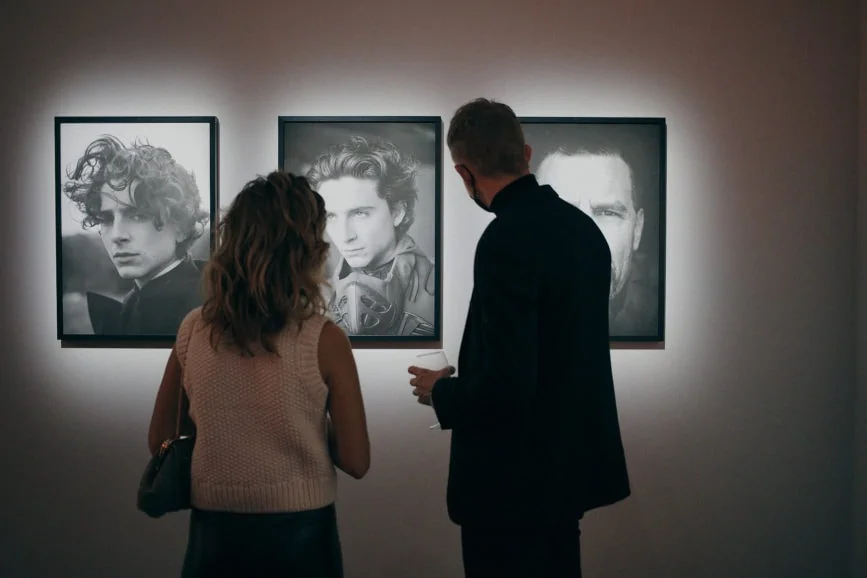
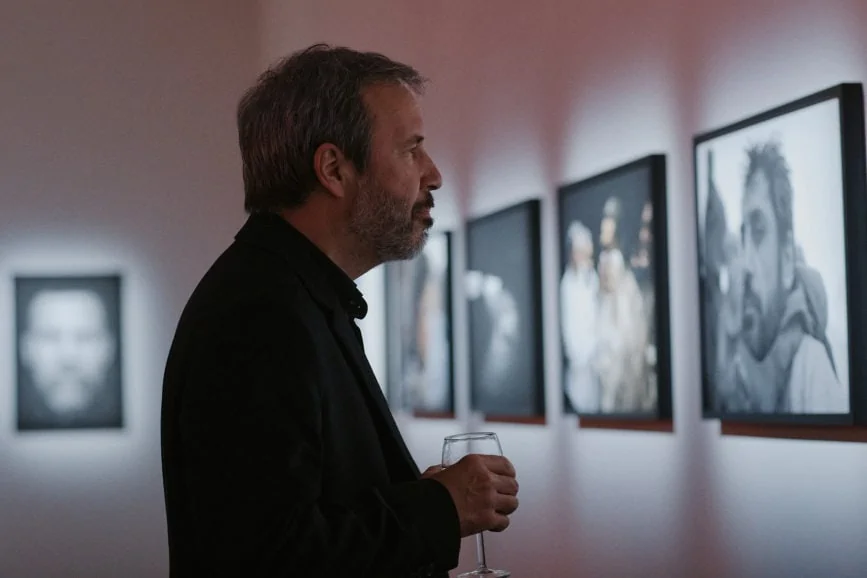
Reading the poetry as the project evolved, Fraser discovered Brolin had the ability to tap into the humanity of the images, characters, and people. “An image by itself says something, words by themselves say something, but together, they can mean something totally different,” says the cinematographer. “Josh’s poetry is beautiful – I was reading raw writing straight from the mind, unedited. Rawness is what I love in life and taking those raw unedited words and putting them on a raw unedited image, to me, is just magic.”
Fraser likens the project to “a punk rock jam of images, words, and design” that is similar to musical improvisation, “where you get pumped up and inspired by others”. “There are pages of nothing and that’s a deliberate design choice Me and the Bootmaker made to take it away from being a standard photo book. Photography can sometimes take itself too seriously and I think our approach moves it away from that,” he says.
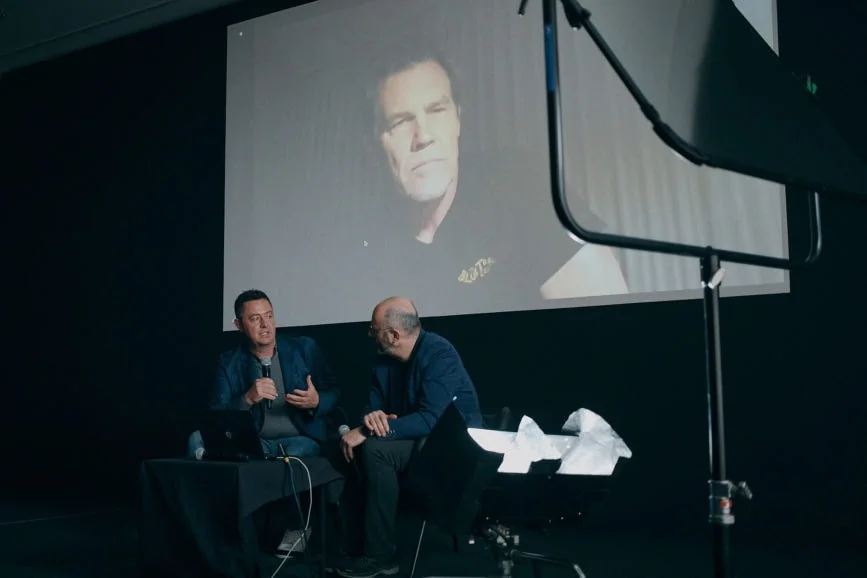
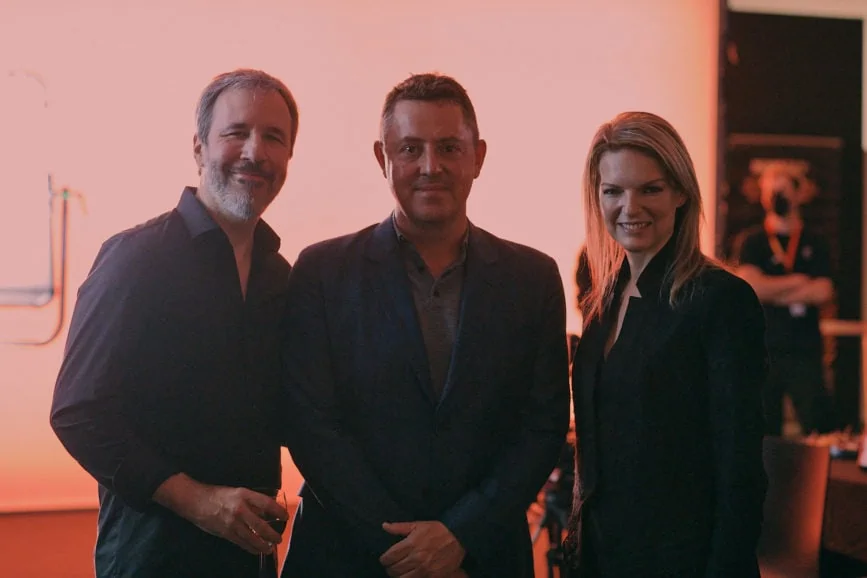
The book also reminded Fraser why he first pursued a career in filmmaking. “I’m so inspired by the creations of others when collaborating that I lift my game, and hopefully give back to them something they’d never have done by themselves. This time it wasn’t a film; it was being published. This art book – made up of poetry, images, prose, and design – just captures the mood and the story of the film’s creation and has a life of its own.”
Images from the book were shown at an exclusive exhibition at the Torun Contemporary Art Museum, hosted by Camerimage Film Festival, Warner Bros., and The Light Bridge. The book Dune is available as part of the Legendary’s limited edition The Art and Soul of Dune. For more information and to order a copy, please visit bit.ly/3FEj2Uv.
